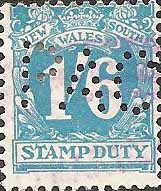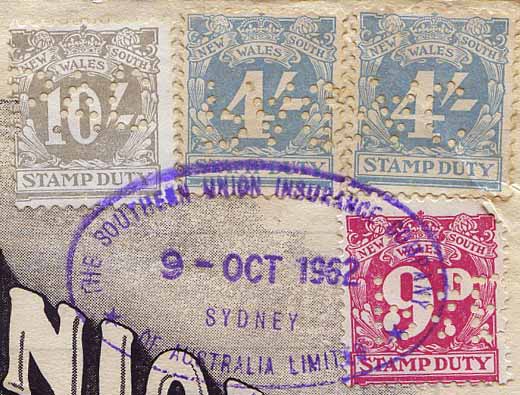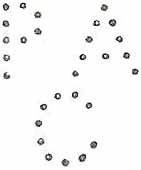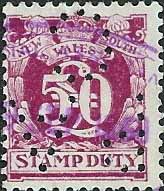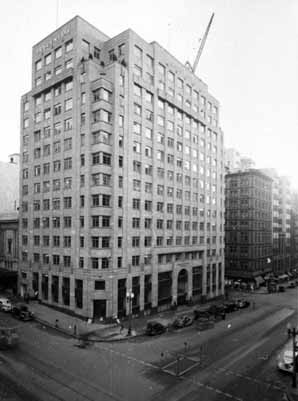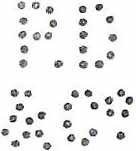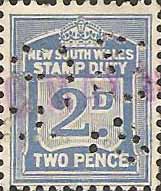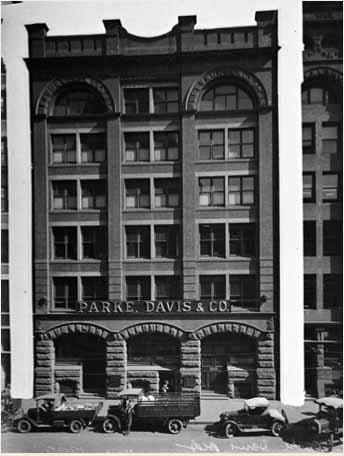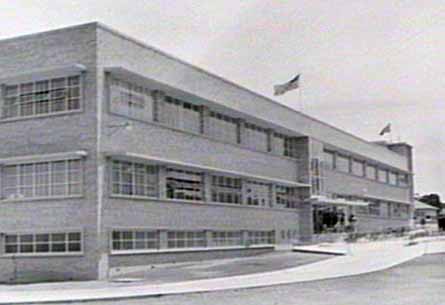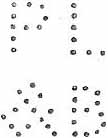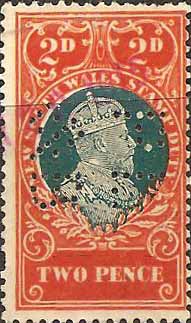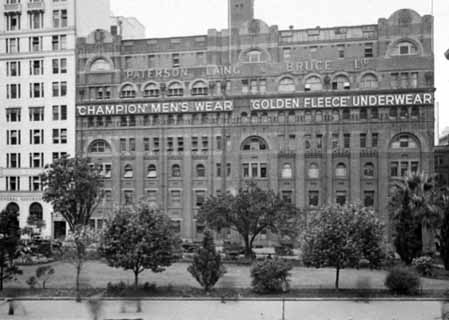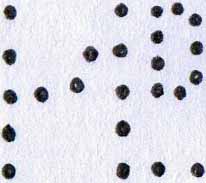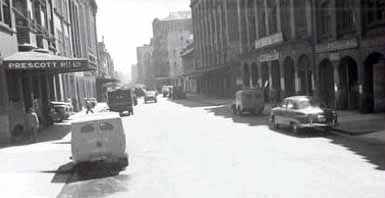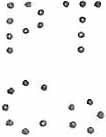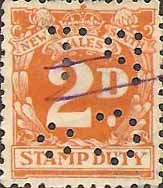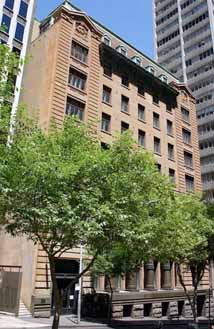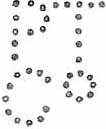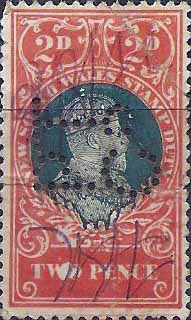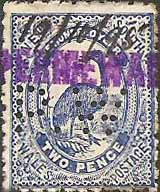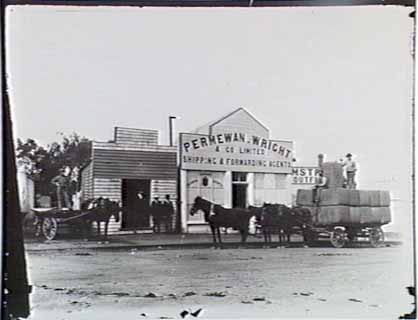|
Private Revenue Perfins of New South Wales An Elsmore Coath production The authors would welcome your comments additions or input into this work A B C D E F G H I J K L M N O P Q R S T U V W Y Other P -------------------------------------------------------- PAC.a
User: Phoenix Assurance Co Insurance Provider Address: 117 Pitt St, Sydney (from 1906) Later 32-34 Bridge St, Sydney, NSW Revenue Use: Numeral 1929-66 issue 3d, 3d[no wmk], 6d, 6d[no wmk], 9d, 1/-, 1/6, 1/6[no wmk], 2/-[no wmk], 3/-, 4/-, 4/-[no wmk], 5/-, 5/-[no wmk], 6/-, 8/-, 10/-, 16/-, 18/-, £1, 30/- Decimal 1966 issue 6c, 8c, 25c, 40c, 60c, 80c, $1, $2 Rarity Scale: Numeral 1929-66 issue 3d R4, 3d[no wmk] R4, 6d R4, 9d R3, 9d[no wmk] R4, 1/- R4, 1/6 R4, 1/6[no wmk] R4, 2/-[no wmk] R4, 3/- R3, 4/- R4, 4/-[no wmk] R4, 5/- R4, 5/-[no wmk] R4, 6/- R2, 8/- R4, 10/- R3, 16/- R3, 18/- R4, £1 R3, 30/- R4 Decimal 1966 issue 6c R4, 8c R4, 25c R4, 40c R4, 60c R4, 80c R4, $1 R4, $2 R4 Background: *Phoenix Assurance was established in England in 1782. Although the company started as an assurance company (life insurance) they went onto offer both marine and fire insurance and yet retained the 'Assurance' title in their name. The delineation between assurance and insurance is that assurance covers an event that will happen, such as death; and insurance covers an event that may happen, such as fire. The anomaly is that Life Assurance is generally marketed and sold as Life Insurance. The company claim to have first offered products in the States of Australia in 1839, but in the main their early involvement was through agencies, in particular Dalgety and Co. Ltd. They established a head office in Sydney in 1906 but in other States and regional areas Dalgety represented them. The company was also active in New Zealand. In 1921 they took over the Norwich Union Fire Office but this was later re acquired by Norwich Union in 1925. In 1984 Phoenix (UK) was acquired by Sun Alliance, itself a merger between Sun Insurance and Alliance Assurance which later merged with Royal Insurance in 1996 to become Royal Sun Alliance and was later (2008) re-badged as RSA Insurance Group and is headquartered in London. As part of these changes the companies activities in Australia and New Zealand were restructured under the Promina Brand and the General Insurance arm is renamed Vero. Device: The PAC.a device was a fairly modern one, coming into service as recently as 1962 and remaining in use until at least 1966. Many contemporary devices where multi die ones but the PAC.a device seems to have been a single die device, as multiple strikes of the pattern on stamps show no consistent relationships to each other.
The pattern is only found on the revenue stamps of NSW. In late 1962 usage carry cachets of “The Southern Union Insurance Company of Australia Limited”. This is consistent with what we know about Phoenix, and for that matter many Insurance companies during the acquisitive activity of the 20th century. Small Insurance companies were absorbed or acquired but continued to trade as before but often they shared offices, stationary and perforators. Related Patterns: Refer to related company patterns in: NSW: LG/A.a NU.a NUF.a Other – Section 1 Commercial Overprints Norwich Union/Fire Office *Trove *Vero web site
PAC.a Phoenix Assurance take over of Southern Union Insurance -------------------------------------------------------- PA/C.a
User: Prudential Assurance Co Ltd Insurance Provider Address: 39-49 Martin Place, Sydney, NSW Revenue Use: Numeral 1929-66 issue 2d, 3d, 4d, 6d, 8d, 9d, 9d[no wmk, 1/-, 1/6, 2/-, 2/6, 3/-, 3/-[no wmk], 5/-, 6/-, 8/-, 10/-, £1, 30/-, £5, £10, £30, £50 Decimal 1966 issue 1c, 3c, 4c, 25c, 50c, $2 Rarity Scale: Numeral 1929-66 issue 2d R2, 3d R2, 4d R3, 6d R4, 8d R2, 9d R3, 9d[no wmk] R4, 1/- R3, 1/6 R4, 2/- R2, 2/6 R3, 3/- R2, 3/-[no wmk] R4, 5/- R2, 6/- R3, 8/- R4, 10/- R3, £1 R3, 30/- R4, £5 R4, £10 R4, £30 R4, £50 R4 Decimal 1966 issue 1c R4, 3c R4, 4c R4, 25c R4, 50c R4, $2 R4 Background: *The Company was founded in May 1848 in London as, The Prudential Mutual Assurance Investment and Loan Association, for the purpose of providing loans to professional and working people. In 1854 the Company began selling low investment life cover via a network of door-to-door salesman. The company became a limited liability company in 1879 and by 1900 a third of the UK population was insured with Prudential. In 1912 they moved into the newly established area of sickness and unemployment cover, before embarking on an international expansion starting in India in 1923, which then expanded into Australia and New Zealand, eventually establishing branches in all capital cities of Australia. The Company was listed on the London Stock Exchange in 1924. In 1986 they acquired the US insurer Jackson National Life and in 1997 they acquired Scottish Amicable Insurance. In 1999 they acquired M&G Funds Management before being listed on the US Stock Market in 2000. The Prudential Assurance Company (UK) is not to be confused with the Prudential Insurance Company of America, which was started as a Friendly Society in New Jersey in by John Dryden. Both companies share the same name but had tended to stay out of each other’s markets. However in the 1990’s Prudential (US) expanded into certain European markets and this lead to Prudential (UK) acquiring US Insurers and listing on the US Stock Market. A legal case in 2003 failed to resolve the issue. Device: The PAC.b device was used on the revenue stamps of NSW as well as the postage stamps of Australia, (Sydney postmarks predominate), from at least 1933 until 1967. The device was most likely a single die format, as multiple strikes do not show any consistent relationship to each other. A contributor to our study, Arthur Taylor of Nowra, NSW, has noted that the early examples of the use of this device produce patterns with slightly different shape and marginally thicker pins. We were able to confirm this from the examples that we have of this pattern from 1933 on both revenue and postage stamps. We are reticent about calling this a different pattern as the pattern is only slightly different in character and this is due in the main to the visual effect of the slightly larger pins. It was most likely the result of modification to the same PAC device. The PAC.b pattern is quite large and it only barely fits onto the smaller format stamps, such as the Numeral series of NSW and the KGVI postage stamps. This combined with the thick diameter pins would have removed a lot of paper and much of it near the standard perforation lines. This would have made separation of stamps cumbersome and this may have been addressed by the fitting of thinner pins. Apart from this issue, that seems to have been addressed quickly, the device proved sound and it was still producing clear strikes in 1967. The size of the pattern does lead to more partial strikes particularly on smaller format stamps. Related Patterns: Nil *Trove *Prudential web site
Prudential Insurance Australian and New Zealand Head office Martin Place Sydney -------------------------------------------------------- P.D/&Co..a
User: Park Davis & Co Ltd Pharmaceutical Manufacturers Address: 50 Rothschilds Ave, Roseberry, NSW Revenue Use: KEDVII 1909-28 issue 4d Numeral 1917 issue 2d
Rarity Scale: KEDVII 1909-28 issue 4d R4 Numeral 1917 issue 2d R4 Background: Parke-Davis was founded in 1866 in Detroit, Michigan (USA) as a partnership between Dr. Samuel P. Duffield, a physician and pharmacist and Hervey Parke. A third partner George S. Davis joined in 1867. Duffield left the partnership in 1869, and the name Parke, Davis & Company was formally adopted in 1871 and later incorporated in 1875. In time the company became one of the world's largest pharmaceutical companies and they are credited with building the first modern pharmaceutical laboratory and developing the first systematic methods of performing of clinical trials of new medications. In the first half of the 20th Century, Parke-Davis introduced a number of breakthrough products, including, the first bacterial vaccine, a pure form of adrenaline, and the first widely available treatment for epilepsy. After World War II, Parke-Davis popularised a number of anti-infectives, developed the Salk polio vaccine, as well as being one of the pioneers in the development of oral contraceptives. The company expanded into Australia in August 1902 (some sources 1903) and initially they traded only in imported products. At first they were located at 125 York St, Sydney, NSW but they later established local laboratories as well as building a warehouse and administrative offices at 50 Rothschilds Ave, Roseberry, NSW in 1930. The Rothschilds Rd site was demolished in 1954 to permit road widening and in that year the company opened a new research and manufacturing facility in Caringbah NSW. Device: The PD/&CO.a device was most likely a single die device, as examples of multiples strikes we have seen do not show any consistent relationship to each other. The pattern is found rarely, on the revenue stamps of NSW, but is quite common on the postage stamps of Australia over the period 1921 until 1954. The die of the device is quite large and has rather thick pins that remove a great deal of paper with each strike. For these reasons the pattern is often seen punched across the stamp in positions 2,4,6 and 8 and/or as a partial strike in smaller format stamps such as the NSW numeral revenues. Related Patterns: Nil *Wikipedia *Trove *Pfizer website *State Library of NSW
Parke Davis building 125 York St, Sydney 1920-30 Parke-Davis was acquired by Warner Lambert in 1970, which in turn was acquired by Pfizer in 2000.
Parke Davis facility at 32 Cawarra Rd, Caringbah, NSW -------------------------------------------------------- PL/&B.a
User: Paterson Laing & Bruce Warehousemen. Later Department Store Address: Sydney, NSW Revenue Use: KEDVII 1909-28 issue 2d Rarity Scale: KEDVII 1909-28 issue 4d R4 Background: The origins of the company date back to 1850 when J.C.Young opened a small warehouse in Geelong. Later in 1852 after gold was discovered in Victoria, Young established a branch in Ballarat and appointed John Paterson as Manager. The business was later moved to Melbourne and Paterson was admitted to a partnership, the company then being known as J. C. Young & Co. There were further changes in the partnerships as follows; 1860 first being called Paterson, Palmer & Co, then, after the amalgamation with Ray Glaister & Co; as Paterson, Ray, Palmer & Co. In 1876 the company became Paterson Laing & Co. and then finally Paterson, Laing & Bruce with John Bruce joining the company in 1878. The Depression of the 1890’s were difficult times for the company but during this period Bruce managed to borrow substantial moneys to buy out his senior partner John Paterson and become the major shareholder. In 1900 the company opened a branch in Sydney however Bruce died in 1901 leaving the management of the company to his sons Earnest, in Australia and Stanley who lived in London. Initially in 1898 Paterson, Laing & Bruce Ltd was registered in London but on John Bruce’s death it was taken over by a newly registered Paterson, Laing & Bruce (1901) Ltd in July 1901, with the '1901' being taken out of the name in 1903. After completing his studies and experience with a commercial legal firm, Stanley Bruce was appointed acting Chairman in 1907 (confirmed in 1908) staying in London, as this was still the seat of the companies other Directors, shareholder and financiers. By 1910 the company had become well established in Sydney and was growing in Melbourne. That year Stanley returned to Australia as General Manager as Ernest was overseas and they again exchanged positions in 1914 at the outbreak of World War I. Despite the war and the fact that both Earnest and Stanley were on active service, the company prospered. Stanley was discharged in 1917 as wounded and returned to Australia as General Manager and in April 1918 successfully won the Federal seat of Flinders for the National Party. He was later Prime Minister of Australia from 1923-1929. Stanley Bruce spent eight months of 1919 at head office in London. Ernest died that year, leaving Stanley to handle the two positions that they had shared. He again went to London early in 1921 but by 1922 he was made Treasurer in the Australian Government and his political career had eclipsed his business career and he handed over the running of the company to his solicitor to Thomas Alston. In the 1929 election Bruce lost his seat and his Prime Ministership and again turned his attention to his business that was under growing pressure. Although re elected in the next election in 1931 he spent most of his time abroad on various appointments including High Commissioner in London, but retired from Australian politics in 1945. In 1947 New Year honors Bruce received a Viscountcy, and chose to be Bruce of Melbourne and took a seat in the English House of Lords, as well as accepting various directorships, mainly with Australian companies. Bruce continued to live in London where he died on 25 August 1967. In February 1966 the company was merged with Robert Reid & Co Ltd into Paterson, Reid & Bruce Ltd. Device: Patterson Laing and Bruce were major perfin users and there are more than 30 different patterns attributed to them. Most of these were used in Melbourne and most were Service Punctures. That is temporary dies created to apply a pattern to a stamp purchased from a stamp vendor. The Melbourne office had at least 5 custoimised devices between 1896 and the 1940’s and there usage overlaps considerably. The PL/&B.a device was one of 2 devices used in the Sydney office and as with the Melbourne usage these 2 Sydney usages overlap. PL/&B.a 1905-1927 PL/&B other 1920-1922 Only the PL/&B.a pattern is found used on the revenue stamps of NSW but it is also found used on the postage stamps of NSW as well as those of Australia. Revenue use is very rare. The PL/&B.a pattern is reported on the postage stamps of Queensland however this is most likely usage in the 1912 period when interstate postage stamps were being used in Sydney to use up stocks prior to the issuing of the Kangaroo series in 1913. The device was always located in Sydney. All the devices used by Patterson Laing and Bruce were single die devices. Related Patterns: Refer to other Patterson, Laing or Bruce company patterns in: VIC: PL/&B.a PL&B/M.a *State Library of NSW -------------------------------------------------------- PLD.a
User: Prescott Ltd Dairy Products Distributor Address: 365-375 Sussex St, Sydney, NSW Rear 14-16 Dixon St Revenue Use: Numeral 1929-66 issue 2d Rarity Scale: Numeral 1929-66 issue 2d R4 Background: Prescott Ltd was mainly a dairy produce merchant with offices in Sydney, Tamworth, Orange and Dubbo. They were certainly in business as early as 1913 but little is reported from them at this stage. In June 1950 they were acquired by Grocery and General Merchants who were in turn acquired by Permewan Wright in 1969. Device: The PLD.a device was most likely a single die device, as multiple strikes do not show any consistent relationships to each other. The device was in service from 1913 until at least 1951 and it is found used on revenue and postage stamp of NSW as well as the postage stamps of Australia. The usage on NSW postage stamps is rare as the timing of the introduction of the device coincided with the issuing of the Kangaroo stamps in 1913. In c1928 the device suffered a breakage (see below) and all strikes after this point are minus the three right hand pins of the P. This produces a rather odd pattern in which the P looks more like a misshapen Y. Related Patterns: Refer to other related company patterns in: NSW: PW.a VIC: PW.a Related Patterns: Refer to other related company patterns in Security Overprint book: NSW: PRESCOTT.a
1928-51
Prescott Pty Ltd 365-375 Sussex St, Sydney -------------------------------------------------------- PT/Co.a
User: Perpetual Trustee Co Trustees Address: 2-6 Spring St, Sydney, NSW From 1916: 33-39 Hunter St, Sydney, NSW Revenue Use: Numeral 1917 issue 2d Numeral 1929-66 issue 2d Rarity Scale: Numeral 1917 issue 2d R4 Numeral 1929-66 issue 2d R1 Background: *Perpetual Trustee Company (Limited) is one of Australia’s oldest financial institutions and was formed in Sydney in September 1886. This followed the recommendations a meeting in 1885 of senior Sydney business and professional people, who had seen the need for a Trustee company to provide a range of financial management services. These services included estate planning, administering deceased estates, managing the financial affairs of persons unable to look after their own interests, and administering charitable trusts and foundations. The company was initially based at 105 Pitt Street, Sydney and its first chairman was James Fairfax (later Sir James). In June 1888 the NSW Government passed a special act to grant Perpetual the power to act as a corporate executor and trustee. The company paid its first dividend in 1893 and has paid dividends every year since then. The company moved to larger premises, firstly in 1891 to 12-14 O’Connell Street and then in 1896 to 2-4 Spring Street. In 1916 it moved to newly built premises at 33-39 Hunter Street, and in 2006 they moved to their current premises at Angel Place, 123 Pitt Street, Sydney. By 1935 the Perpetual Trustee Company controlled trust estates to the value of £50,000,000, making it easily Australia’s largest trustee company. In 1963, The Perpetual Executors & Trustees Association of Australia Ltd (Victoria) and Queensland Trustees Ltd, which had operated in their own states since the 1880s, merged with Perpetual Trustee Company Ltd (NSW). In 1964 Perpetual listed its shares on the Australian Stock Exchange and this continues today. Since the 1980’s Perpetual has expanded beyond its traditional trustee business and entered the growing funds management industry. Device: The PT/CO.a device was most likely a single die device and it came into service in 1912 and was used up until at least 1920, possibly later. The pattern is found on the revenues stamps of NSW as well as the postage stamps of NSW and those of Australia. Related Patterns: Refer to other related Trustee Company patterns in: NSW: PT/CO.b QLD: QTL.a in Other – Section 2 Commercial Overprints VIC: T.T./E.A..a *Perpetual Trustees web site
*Trove
33-39 Hunter St, Sydney, NSW -------------------------------------------------------- PT/Co.b
User: Perpetual Trustee Co Trustee Company Address: 33-39 Hunter St, Sydney, NSW Revenue Use: KEDVII 1909-28 issue 2d Numeral 1917 issue 2d Numeral 1929-66 issue 2d Rarity Scale: KEDVII 1909-28 issue 2d R4 Numeral 1917 issue 2d R4 Numeral 1929-66 issue 2d R4 Background: See PT/CO.a above Device: The PT/CO.b device was most likely a single die device and it came into service in 1922 replacing the PT/CO.a device and it was used up until at least 1927. The pattern is found on the revenues stamps of NSW as well as the postage stamps of Australia. The revenue usage seems to be mainly low value duties (2d) and these are often found on parts of rental receipts. Related Patterns: Refer to other related Trustee Company’s patterns in: NSW: PT/CO.a QLD: QTL.a in Other – Section 2 Commercial Overprints VIC: T.T./E.A..a -------------------------------------------------------- P.W.a
User: Permewan Wright & Co Ltd General Carriers, Agents and later Hardware and Supermarkets Address: 129-131 Sussex St, Roseberry, NSW Revenue Use: QV 1880-1902 issue 2d QV 1888 fiscal issue 2d Rarity Scale: QV 1880-1902 issue 2d R4 QV 1888 fiscal issue 2d R4 Background: *John Permewan, was born in Penzance, Cornwall, England, in 1837 and immigrated to Ballarat, Victoria in the early 1850’s. He joined the carriers and commission agents company, Browne, Osborne & Co who operated between Geelong and Ballarat. Permewan became a partner in 1861 but that same year the partnership split with Browne and Osborne forming their separate companies, Browne, Sons & Co. and T. Osborne & Co., respectively. Permewan joined T. Osborne & Co and carried on business until 1869 when he joined with E. Hunt to form Permewan Hunt & Co.. In 1876 Hunt retired and J. E. Wright joined the company and it became Permewan Wright & Co. It became a limited company in 1879. (Some sources 1884). The business grew through expansion and acquisition. In July 1875 they acquired Coghill's and the Wagga Wagga Steam Navigation Co. and this gave them a large share of the Murray trade centred in Echuca. They then expanded into the Darling and Murrumbidgee Rivers and by 1888 Permewan Wright had 48 branches in Victoria and New South Wales and agencies at almost every railway station. They established a 3 storey warehouse in Collins St, Melbourne and their London agent, Pickford & Son, linked them to an extensive international trade. The company expanded its road cartage network in addition to commissioning two cargo and three passenger steamers, which ran between Geelong and Melbourne. The Depression of the 1890s forced many agents, and river traders out of business and this only served to strengthen Permewan Wright & Co. John Permewan remained as head of the company until failing health forced him to retire in 1902. He died at his home in Ballarat on 23 December 1904 aged 67, survived by his wife Isabelle nee Towers, and by a son and a daughter. The company name changed to Permewan Wright Ltd in 1927; and the business was redirected into wholesale hardware and later the company became a broadly based chain of supermarkets, after a merger with Grocery & General Merchants Ltd. They later acquired the Victorian, NSW and Tasmanian grocery chain Moran and Cato in 1969. Device: The PW.a device is a single die device, which is found used on the revenue and postage stamps of NSW and Victoria and later the postage stamps of Australia, collectively from at least 1895 until about 1925. Evidence from postmarks on postage stamps indicates that usage was widespread, mainly across Victoria, and the usage in NSW overlaps with the Victorian usage. This can sometimes be explained by cross State usage but this is only in the period around 1912 when the Post Offices were looking to use up State issues prior to the issuing of the first Australian stamps in 1913. The patterns found on all these remote usages are exactly the same. It is possible that this was through the use of a series of identical devices, but in such instances there are small differences in the pattern, different wear characteristics, consistent missing pins and the like that lead to the identification of specific devices/patterns to particular locations. However this is not the case with the P.W.a pattern and we consider that it is more likely that the stamps were punctured centrally and that they were distributed for use in the companies various offices. Related Patterns: Refer to other Permewan Wright and related company patterns in: NSW: PLD.a VIC: P.W.a *Australian Dictionary of Biography *State Library of Victoria
-------------------------------------------------------- A B C D E F G H I J K L M N O P Q R S T U V W Y Other © copyright 2011 |

